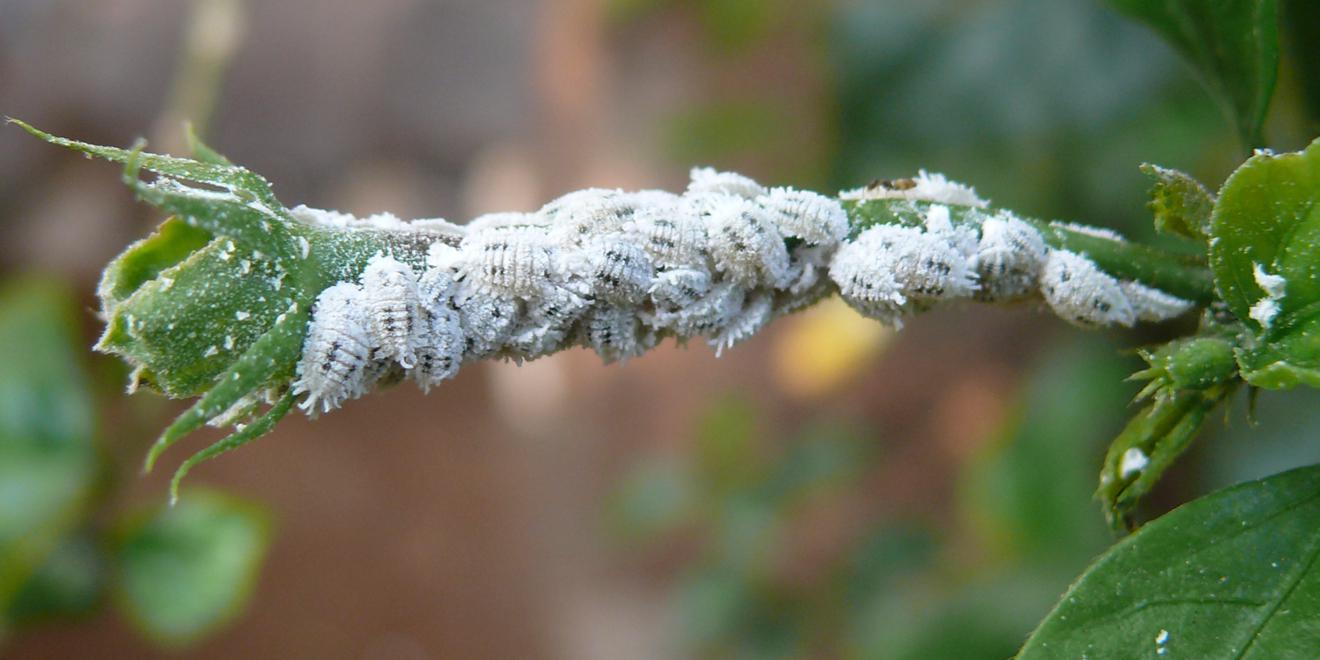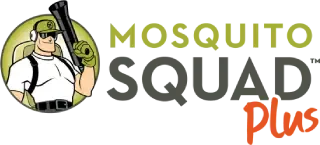How To Get Rid of Scale and Mealybugs on Plants
Posted by Mosquito Squad
October 17, 2025

Author: Emma Grace Crumbley, Entomologist
Struggling with sticky leaves, stunted growth, or mysterious white fuzz on your plants? Scale insects and mealybugs are common but persistent pests that can wreak havoc on both indoor and outdoor greenery. Don’t let these pests take over your plants. Check out these tips to keep scale and mealybugs under control.
What are Mealybugs and Scale Insects?
Mealybugs and scale insects are both true bugs in the order Hemiptera, the same order as other plant pests like whiteflies and aphids. In fact, mealybugs are a specific type of scale insect known for their softer bodies and dusty coatings. Most other scale insects have harder, waxier exoskeletons.
Mealybugs look like white cotton or webbing clustered on your plants. These pests tend to gather on the underside of leaves or at the nodes of the plant and can be easily overlooked. Scale insects, on the other hand, often appear as small bumps stuck to leaves and stems. They are sometimes so well-camouflaged you might mistake them for part of the plant itself.
Both pests feed on plant sap and excrete a sticky substance called honeydew, which can lead to black sooty mold and attract other pests to your plants, like ants. Both pests also tend to work in groups to cause damage to your foliage, with infestations ranging from hundreds to thousands of pests per plant. Over time, infestations can weaken plants, causing yellowing, leaf drop, or even plant death.
Signs of an Infestation
Mealybugs and scale insects can sustain their own infestations separately or infest the same plants simultaneously, damaging your vegetation twice as fast. To prevent an infestation in either form, check your indoor and outdoor plants regularly for:
- White, fuzzy clusters along plant leaves and nodes (aka, the mealybugs)
- Tiny, hard bumps on stems or leaves (aka, the other scale insects)
- Sticky leaves or stems
- Black, moldy patches
- Other pests, like ants or flies, near or on plants
Prevention and Control
The best way to prevent an infestation on indoor plants is to be conscious of the plants you buy and regularly check plants for pest evidence during routine maintenance. Because of their high reproduction rates, mealybugs and scale insects are very successful when it comes to spreading their infestation from one plant to another. The next time you buy a house plant or an ornamental addition to your garden, be sure to check the leaves, stems, and nodes carefully for any signs of pests. For extra precaution, place newly purchased plants in quarantine away from other foliage for a few days to ensure no pest activity occurs and no mealybugs or scale insects are present.
Ongoing infestations can be a nuisance to manage, but there are several steps you can take to get mealybugs and scale insects under control:
Physically Remove the Pests
The fastest way to get rid of a pest problem is to remove the pests themselves. In the case of scale insects and mealybugs, this may look like pruning back heavily infested stalks and branches or carefully scraping pests off of leaves and stems. In any case, be sure to work carefully when removing pests and avoid over-pruning, which could cause additional stress to the plant.
Wash Your Plants
From mealybugs and scale insects to aphids and whiteflies, this method works great for Hemipteran plant pests of all kinds. Using a steady and strong stream of water, either from a hose or faucet, wash plants thoroughly to remove pests. Horticulturalists and botanists recommend using neem oil or castile soap while scrubbing plants for an extra layer of protection. If you choose to use soap to wash off pests, be sure to select a product that will not harm or burn your plants in the process.
Promote Beneficial Insects
For outdoor plants dealing with mealybugs and scale insects, let nature do the pest control work for you. Several beneficial insects, like ladybugs, lacewings, and minute pirate bugs, hunt and eat plant pests and can help take care of infestations for you. To promote these insects, find ways to increase the biodiversity of your yard, like planting native wildflowers and adding cover crops to provide food, water, and shelter to these hard-working bugs.
Call in the Pros
For a long-term strategy to help manage plant pests and support healthier plants over time, call Mosquito Squad Plus today. Our highly trained technicians are taught to inspect for pests, identify issues, and implement integrated pest management practices to control a range of pests, helping you take back your yard. Call a squad location near you today to learn more about our extended services and receive a free quote on your treatment. Services vary by location.
